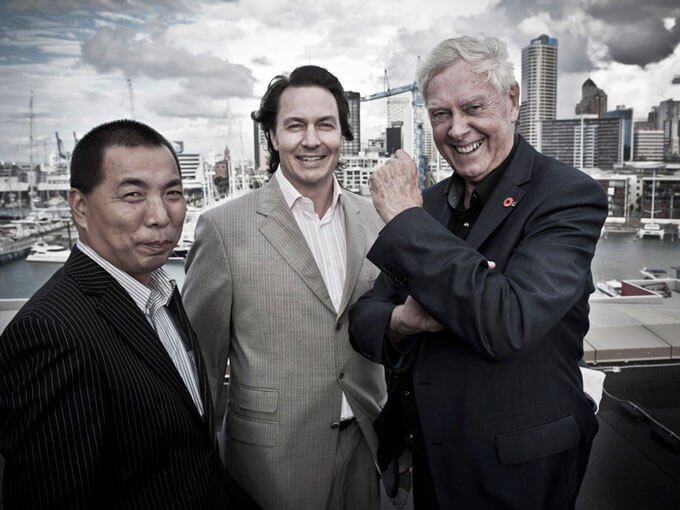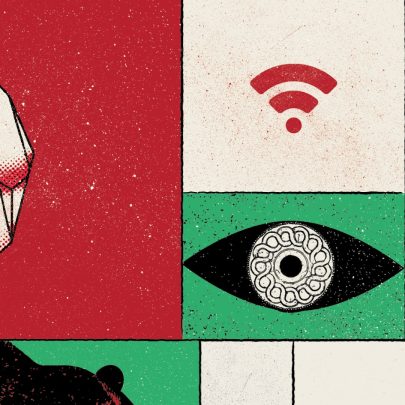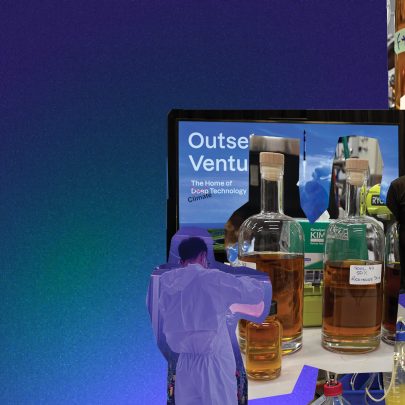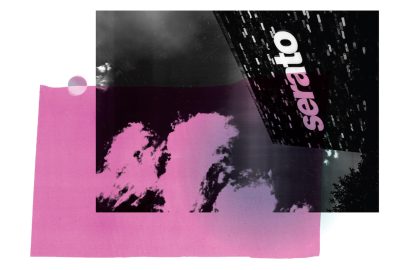Jul 8, 2014 Business
The two gweilo were being taken for a ride. When you’re after a billion dollars in China, the road can take strange twists, but neither of them had expected this midnight turn off the highway and into the countryside. Bob Harvey and John Dalzell, chairman and CEO of Waterfront Auckland, looked out into the darkness from the back of the SUV. They were deep in the forest now. The lights of Beijing were far behind them. A rich field of stars was even visible in the night sky beyond the smog-bound city.
Dalzell turned in his seat. “Where the fuck are we?”
“I don’t know.” Harvey, an old China hand, could only shrug and state the obvious. “We’re being taken somewhere.”
They were meant to be heading to their hotel after a long day pitching Auckland’s waterfront regeneration to investors in Guangzhou. They’d been met at the airport by a couple of SUVs laid on by one of China’s wealthier citizens and told they’d just stop off somewhere along the way. Now they were in the middle of nowhere, going deeper into the darkness down little dirt roads.
Finally the vehicles slowed. Headlights lit up a looming gateway of ancient carved stonework. Beyond was a private estate that Dalzell still finds difficult to describe: “You’ve never seen anything like it in your life.”
A 500-year-old Buddhist village had been transplanted there wholesale, set into a sculpted landscape of islands and lakes, and then — remarkably — the interiors of each house had been encased in glass. The full moon lit up sheer glass walls behind which stood Ming Dynasty architecture and artefacts, perfectly reconstructed and preserved in a life-size, liveable showcase.
The sanctuary belonged to a circle of China’s über-rich businessmen. The men from Waterfront Auckland were welcomed inside. They were invited to take tea. “When we entered that retreat,” says Harvey, “I knew we’d passed the tests. We’d entered their world of extraordinary wealth.”
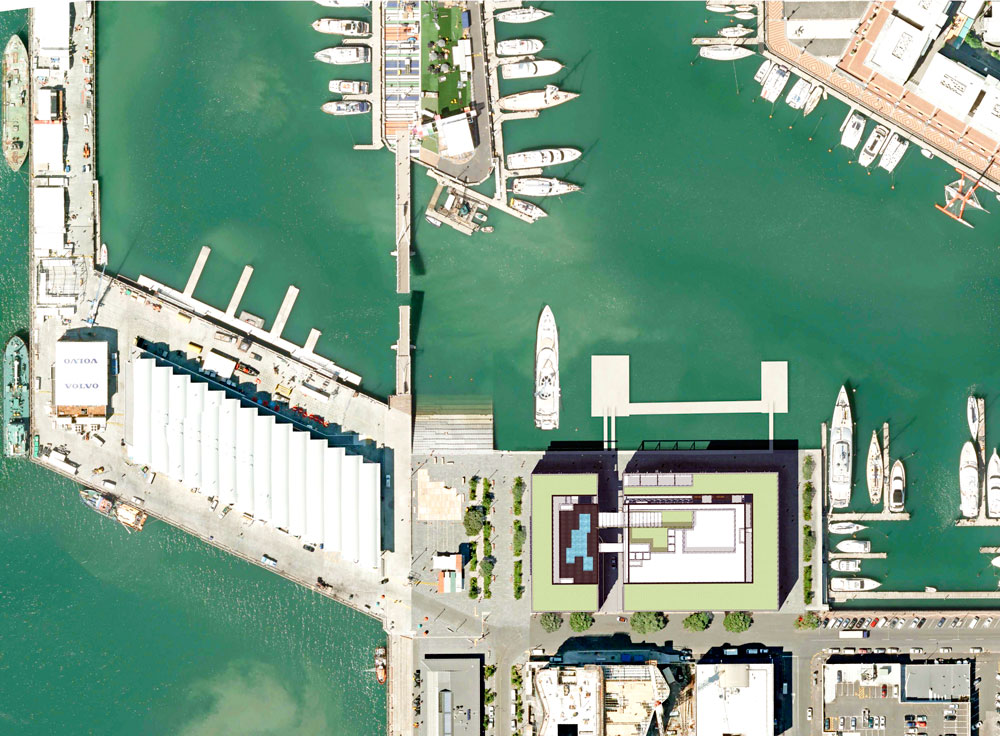
This is the story of how Waterfront Auckland made friends and a major deal with a trillion-dollar circle of China’s most powerful tycoons. The agency claims it has significance for the waterfront and far beyond, because those tycoons are now eager to invest in New Zealand. It is the hard-to-believe tale of the “Three Musketeers”, “Mr Go” and the “Billionaires’ Club”.
Waterfront Auckland was created to be the Super City’s dealmaker in the world’s corporate boardrooms. The agency exists to build a modern urban waterfront to a public plan, and to find most of the money to do it from the private sector. It hasn’t justified that existence until now.
True, the agency has convincingly transformed the edge of the old run-down waterfront west of the Viaduct: the paved and palmed Karanga Plaza with its giant sun loungers; the strip of restaurants and bars along the old tram lines of North Wharf; the conceptual and literal playfulness of Silo Park. The work has won awards at home and abroad. More important, it’s given Auckland what Wellington has so long possessed — a central waterfront to be enjoyed (with the added benefits of less wind, a warmer climate…).
“The gains are very tangible,” Dalzell admits, “but very fragile. The risk of losing what we’ve seen down here is still quite high.”
Dalzell is sitting on a couch in Waterfront Auckland’s anonymously functional Westhaven headquarters. He’s a man you can imagine moving easily between council chamber and corporate boardroom. The son of a builder, but also a St Kents Old Boy; once a student who worked his university days as a labourer on building sites, later a professional who lived in a penthouse in what were the Hyatt Residences — a project he managed from beginning to end. He is urbane but engaging, authoritative but softly spoken. He is also surprisingly frank. “We can still stuff this up badly.”
The agency’s work to date has been well received by Aucklanders, but it has all been done with their money and is simply the framework to the bigger picture. The council has been increasingly expectant of a return on $250 million of public funding so far committed to Wynyard Quarter, a return reckoned at five times that amount of private investment. That billion-dollars-plus is what’s needed to build the Central Precinct, the living, working heart of the quarter.
The Central Precinct will comprise several blocks of commercial space (an “Innovation Precinct” focused on high-tech industry) and residential apartments. Artist impressions place you in soft, green public spaces surrounded by sharp, modern, low-rise architecture; lots of trees, plenty of children, no cars.
The precinct also involves the premier piece of real estate under the agency’s control, the site that links this dead centre of the quarter to the lively Viaduct and the city beyond. The location, currently occupied by the hangars of Team New Zealand’s headquarters, is allocated to a five-star hotel.
The Auckland Waterfront Advisory Group had identified a luxury hotel as a pluggable gap in the market as far back as 2000. The thinking still holds true, according to Dalzell. “We do not have a truly international five-star hotel in Auckland. On the international stage, all of our product would be categorised as four-and-a-half stars at best. At best.”
Waterfront Auckland intends the new hotel to be both a luxury drawcard and an architectural jewel in the waterfront crown. It will set the seal, in Dalzell’s words, on turning “one of the most stunning waterfronts in the world into an internationally recognised urban waterfront destination”.
The agency needs to find the investors to build the vision, but it’s trickier than that. It also has to deliver on the public plan, a series of documents building on the Auckland Plan and its vision to make “the world’s most liveable city”. They set out in detail what’s expected of waterfront buildings and spaces that will be used for a century.
There are criteria that have to be met, Dalzell claims. It’s all measureable, scientific. “This is the new and progressive way,” he says evangelically. “The business-as-usual approach leaves it all to the private sector. What you’ve got here is a much more strategic way of dealing with the land holdings.”
The result is meant to be about “place-making” and “sustainability”, to use the jargon. They’re words Dalzell uses frequently. He can talk at length about “double-sided apartments, grey water feeding through swales in the street, solar panels”, but the sustainability he’s seeking is more than ecological. The waterfront he’s meant to create is a community of economic vibrancy, large-scale sociability and low environmental impact.
“You’ve got to sort this out very early on,” he says, “be very clear about what outcomes you’re seeking, and embed them within contractual agreements.” You’ve also got to find partners willing to sign those agreements. The “new and progressive way” provides a refreshing degree of developmental control, especially after the heritage-levelling, eyesore-raising of the 80s, but it costs more. Waterfront Auckland needs investors willing to pay for the “sustainable” quality it is contracted to produce.
Still, Dalzell seems relaxed. He has “our Chinese friends”.
Waterfront Auckland never focused on finding Chinese investment. “It just happened that we got the best response from China,” Dalzell claims. But really that didn’t just happen. It was the product of a chance opportunity the agency might have turned down but for one man.
In early 2012, the agency was running studies on the Central Precinct to gain a detailed understanding of the development. The results would inform the proposal they would present to investors. The 40th anniversary of diplomatic relations between New Zealand and China fell the same year. The Super City decided it was the right time to send a mayoral-led trade mission to the country, then New Zealand’s second-largest trading partner (and now our biggest).
Waterfront Auckland was invited to join Len Brown’s delegation, but had nothing but the Central Precinct concept to take with them. “We stood back,” says Dalzell, “and we said, well, you know, ideally, normally, we wouldn’t be going now, but we have an opportunity.” They asked the agency’s Asia-Pacific investment adviser, John Hong, whether they should take it.
Hong is a genial character of indeterminable middle age with an open, friendly face. He speaks English well and with a slight sibilance transferred from his native Mandarin. With it comes the occasional Chinese aphorism, such as, “It’s important to reach out rather than to sit waiting for the rabbit to bump into the trunk.” It was the advice he gave Dalzell.
They should head to China with Brown, Hong told him. “Mayors in China have much higher profile,” he says. “They sit very close to the top.” Brown’s trip opened the way to an optimal business strategy in China: association with political power and a long-term approach to building contacts with potential investors into firm relationships.
“We realised that we weren’t ready in the normal sense,” says Dalzell. “It would take time to build those friendships and relationships. And by the time we’d done that, we backed ourselves that we’d have the commercial proposition ready.”
So that April, Dalzell, Harvey and Hong went to China. Stuart Ferguson — chef de mission for Brown’s delegation, a veteran of 70 trips to China and former chairman of the New Zealand China Trade Association — was soon calling the determined team the “Three Musketeers”.
Harvey stood out in a way few Westerners could match. He has many titles — westie, clubbie, madman, mayor, knight — but one of the lesser known is honorary citizen of Ningbo, one of China’s oldest cities. It’s the legacy of his dedication to Waitakere’s sister-city relationship with Ningbo through his long mayoral run. He has been to China 22 times.
He has also long been prominent within the Labour Party, and so is a link to the considerable goodwill China holds toward New Zealand, one largely built up by leftists and Labour Party members.
“Bob’s like the elder statesman, really,” Dalzell says, “though he’ll hate me for saying it.” A banquet was given in Harvey’s honour in Beijing’s Great Hall of the People during the visit. Generals and party officials attended the event to mark his friendship and service to China over 40-odd years.
While Harvey was respected, Hong was connected. Ferguson had advised Dalzell before the trip that success in China came down to trusted relationships. Waterfront Auckland needed to build such a relationship with someone who could open doors in the country on their behalf. Dalzell soon found the agency had already done that by accident. “Sometimes the best things are right under your nose.”
Hong was born in Fujian province, on the coast of the Taiwanese Strait. It is an area of cultural and linguistic diversity, a place of migration within China and of emigration from it. Many among the Chinese diaspora trace their roots to the province. “Travel is in the blood,” says Hong.
Hong was struck by the natural environment, but New Zealand seduced him unconventionally, quixotically, at a large book sale at St Cuthbert’s College in Epsom.
He grew up interested in history and foreign cultures and found language to be his way inside them. He says he possesses an “innate ability to learn a language very quickly” and speaks German, French and English, as well as Mandarin and several of its dialects. As a young man, he became a teacher of British and American literature at Fujian’s Foreign Language Institute.
Two decades later, a well-travelled friend told Hong that New Zealand was the best place in the world to live. He packed a small bag to see for himself. He arrived in Auckland in 2003, on the eve of the Chinese New Year, having planned “another normal, brief trip abroad”.
Hong was struck by the natural environment, but the country seduced him unconventionally, quixotically, at a large book sale at St Cuthbert’s College in Epsom. He had come of age in a China where books in English were scarce. The number on offer at the sale overwhelmed him. The man travelling with a small suitcase bought a staggering 1500 books and resolved to spend the rest of his life here. He and his family are now citizens.
“I love New Zealand more than the Kiwis do,” Hong enthuses. “Love China more than the Chinese do. I know both countries. I choose to live in New Zealand now, so it’s my first home — actually, my final home as well.”
That knowledge and commitment brought him into contact with Auckland local government. He became an adviser to ARC chairman Mike Lee, and a member of the Ethnic Peoples Advisory Panel. Waterfront Auckland sought him out as a translator and media adviser. He proved useful. The agency put him on contract, and then found him a permanent position. “We could see the immense value he could add,” says Dalzell.
Hong’s value was gradually revealed to be more than just a bridge between cultures. When China opened up certain Special Economic Zones to overseas investment in 1984, one of them was Fuzhou, the capital of Fujian province. Hong left his teaching position and became one of China’s pioneers of private enterprise. He worked initially for Puma, and then for the world’s largest supplier of Adidas packaging. In both cases, he was employed to draw investment into China.
Soon he found himself a contact point for foreign business interest in China and, in turn, sought out by both local and central Chinese government to attract Western investment. Hong claims to have thereby cultivated contacts inside the world’s top 500 companies. He seems to have also benefited from a well-connected family, and claims most of his friends are either “top provincial or municipal officials or very successful business people”.
Harvey describes Hong as “extremely well-connected. We’ve got one of the best advisers in the country.”
Asked why he works for the agency, Hong speaks quickly, with passion. “Because I choose New Zealand as my final destination, and my family all live here, and I love New Zealand from the bottom of my heart, I think it’s important to upgrade New Zealand even more.
“New Zealand is known as a clean, pure country. Apart from that, people just think we’re an agricultural country.”
He thinks New Zealand’s innovative ideas and industries have not been well promoted. “We need to do more to market our brand. We need to be bold enough to promote ourselves, rather than shy.”
Hong is not shy. When he had advised Dalzell and Harvey to go to China, he had also made them a promise if they took that advice. In April 2012, he made good on it, introducing them to a family friend who is a respected member of what Harvey refers to as China’s “Billionaires’ Club”.
The Billionaires’ Club is more prosaically the alumni association of the Cheung Kong Graduate School of Business (CKGSB, or CK). It has 6000 members, ranging from business people to celebrities and opinion leaders. All of them are “very influential”, according to Hong. The figures back him up. The CKGSB was founded in 2002 by a substantial donation from the richest man in Asia, Sir Ka-shing Li. Already its graduates manage over $US1 trillion of annual revenues.
Waterfront Auckland desperately needed to put private sector money where its CCO mouth was.
Harvey says that the CK alumni circle is “like a club”, and that the man Hong introduced is “like its secretary”. This seems accurate from Waterfront Auckland’s experience, but the agency will not identify the man. They claim it might expose him to unwanted attention. “Everyone wanting to do business in China would be knocking on his door,” says Harvey. Dalzell calls him “Mr Go” — a minor but, for Waterfront Auckland, appropriate mispronunciation of his real name.
Dalzell describes Mr Go as a slight, congenial and unassuming man. He likes the Western world and travels extensively, while also being knowledgeable about Chinese opera, music and film. Harvey, a film buff, found common ground with him. The two hit it off. When he and Dalzell presented the Central Precinct concept, Mr Go received it enthusiastically.
Mr Go not only encouraged them to return to China when they had the commercial proposition, but also travelled to New Zealand several times in 2012. Each time he brought other CK alumni with him. Hong put himself at their disposal on every visit, entertaining, guiding and introducing. He claims not to have had a day off in a year.
Hong hosted the alumni around the Auckland waterfront, and also introduced them to the city’s leading players in banking, law, accountancy and industry. These visits would prove valuable, according to Hong, because it made the alumni “feel more engaged with New Zealand, know New Zealand much better. They gain lots of confidence.”
By early 2013, with the completion of the studies for the Central Precinct, Waterfront Auckland was in a position to capitalise upon it. They needed to.
“We knew that we absolutely had to have deals done at the end of 2013,” says Dalzell. He insists it was a “self-imposed deadline, to keep that sense of momentum going on the waterfront. We made a commitment to lead with all the infrastructure around the streets that framed up Wynyard Central. The self-imposed deadline was the ideal timeframe, having finished those public spaces, to seamlessly go into the private development.”
Perhaps he says “self-imposed” once too often. He admits the agency was feeling the pressure to deliver. Waterfront Auckland had been talking about winning a billion dollars of private investment since late 2011. Dalzell lapses into management-speak. “That was all about demonstrating the value proposition of the Auckland Council investing and leading with the infrastructure. We were always conscious that level of support from the council had to have a payback.”
It was also a time when criticism of Auckland’s CCOs was building: privatisation by stealth, multiplied bureaucracies, unelected and overpaid executives, fat budgets, no controls, failure to deliver. Waterfront Auckland desperately needed to put private sector money where its CCO mouth was.
The agency teamed up Colliers International, Cameron Partners and Rothschild. Combined, they threw out a global net for investment interest that fell mainly on the Asia-Pacific region. “We hadn’t said, ‘China’s a specific target,’” Dalzell says. Instead, he wanted to go “as wide as possible, to get as many competitive bids as possible”.
Even so, Dalzell specifically planned to return to China to sell the Central Precinct there in person. He had taken on board Hong’s advice that associating with political power was a winning strategy in China. The agency now had the chance to travel there with the Prime Minister. John Key was planning an official visit to make nice with Xi Jinping, China’s new President.
China is a country where political power is trusted by business out of necessity, as government ownership extends to just about everything. “In order to make the chance to make big deals,” explains Hong, “you normally need partnership with government.”
Dalzell realised that tagging along with Key would be the best opportunity to close a major investment deal. Fortunately for the agency, the timing for the trip slipped from late 2012. They hadn’t been ready then. The new schedule of April 2013 would be perfect.
The agency’s small team was not invited to be part of the large business delegation travelling with Key. They would follow closely in its wake instead. “Key was the comet,” Harvey says, “and we were the tail.”
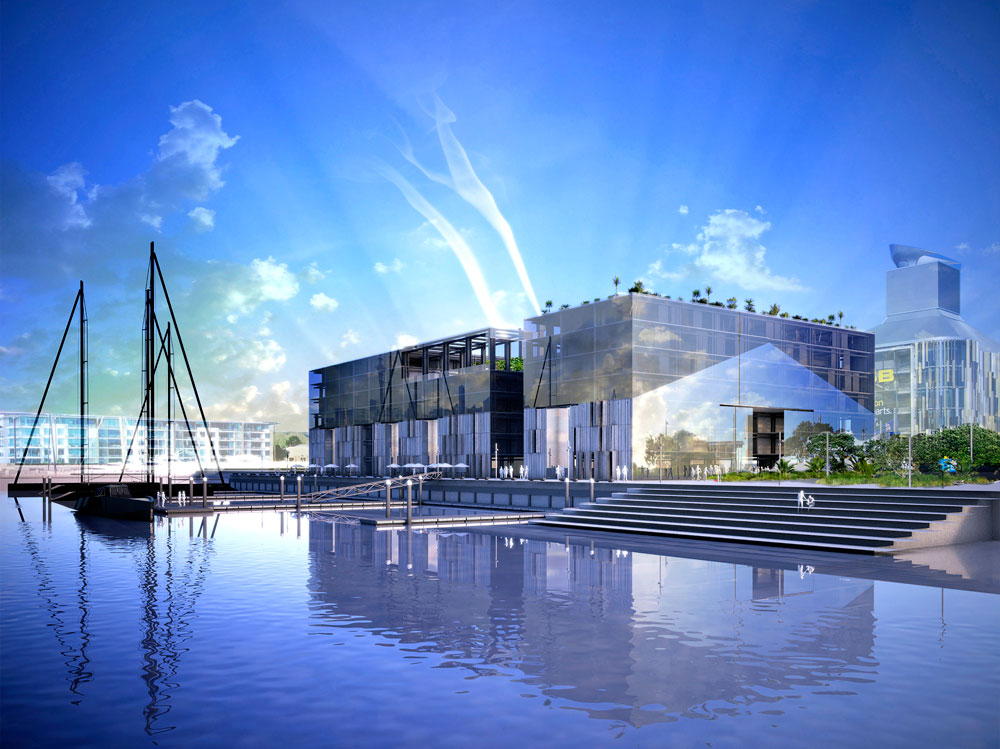
In April 2013, Dalzell, Harvey and Hong again flew into China. The “Three Musketeers” bundled themselves off a commercial flight as Key’s delegation touched down in an RNZAF Boeing. It was only Dalzell’s second trip to China. He found the country “an assault on every sense”. He says Harvey was able to offset that somewhat. “The level of confidence and experience he has — you can come up to speed quickly. That’s priceless.”
Dalzell is keen to “dispel any myths” of ratepayer-funded junkets. “We were working 14-hour days. If you got four or five hours’ sleep, you’re doing well.”
He gives a rapid-fire summary of their first day. “We landed in Guangzhou that morning at five o’clock, had a shower, did five presentations, didn’t even stay in Guangzhou that night.”
The trip was tightly booked, inevitably tensioned by flight delays and slackened by some meetings falling through. Hong claims they were determined to “seek every opportunity” to meet investors who might be interested in the Auckland waterfront. He drew on his contacts to fill any gaps in the schedule. He became, says Harvey, their “mentor, guide, bodyguard, and miracle-handler”.
“I remember going to one presentation,” says Dalzell, “where we thought, ‘Oh, you know, it’s just a casual meeting.’ It was so hot we put our more casual clothes on. We got met down the bottom of the building by a delegation of 12 in black suits.”
The suits escorted them to a boardroom where they found their names on place cards set on the table. The casually attired New Zealanders were a little embarrassed by the attention to detail. Hong had almost done too well. “That was a meeting he’d arranged at the last minute,” says Dalzell.
Dalzell and Harvey walked into their first meeting with the Billionaires’ Club through the dragon’s mouth: the old gatehouse to Huang’s gardens.
But the trip revolved around two planned encounters with the CK alumni, both arranged independently by Mr Go. The first took place in Guilin Garden, a tranquil folly of pagodas, streams and bridges in a park planted with thousands of trees near the centre of Shanghai. Hong told Dalzell and Harvey that it had belonged to the city’s “richest and most influential person” in the 1930s.
The gardens were in fact the creation of the most powerful figure of the city’s legendary pre-war underworld, Huang Jinrong. The son of a small-town constable, “Pockmarked Huang” became a detective himself, only to emerge as both Chief of Police and leader of the criminal society that effectively ran Shanghai. The gardens were his retreat, built on the profits of prostitution, gambling and drugs (opium, of course).
Dalzell and Harvey walked into their first meeting with the Billionaires’ Club through the dragon’s mouth, which the old gatehouse to Huang’s gardens is said to represent. They went on between high walls that twist and roll in the image of a dragon’s tail, through a second gatehouse guarded by statues of elephants and dragon fish. At the end of the path they were welcomed inside Huang’s old residence, now a teahouse.
At the time it was one of the most exclusive teahouses in Shanghai. Event catering was set at a minimum of $NZ120 per person, available to members for an annual fee of more than $NZ15,000. City authorities have recently declared such things improper in public parks. Prices have now been made more accessible.
Not that cost mattered to Waterfront Auckland. The CK alumni laid on everything. “The venue and catering were all provided by them because of my personal connections,” claims Hong. “Quite remarkable,” he adds, almost to himself. “We don’t have the budget, but they arrange everything for us. We just go there to do the presentation.”
Inside the teahouse were 30 members of the CK circle, each one of China’s leading industrialists. They had flown in from across China on Mr Go’s invitation and at their own expense. Their fortunes had been made in everything from hotels and airlines to grain and fertiliser. Dalzell and Harvey were introduced to each in turn, and to the peculiar pattern of these events in China.
With Mr Go and Hong acting as emcees, the introductions alone lasted an hour. Around the table faces became names, names became backgrounds, places, histories. Somehow it flowed into another hour discussing Chinese history in general, and even philosophy. Here Dalzell claims Harvey was again “priceless”. Harvey is always ready to talk and has, Hong says, a reasonable knowledge of Chinese dynastic history. What was “priceless” though was his role in the modern China-New Zealand relationship.
Harvey attended the opening of the Chinese embassy in Wellington in 1973, which Hong says was the first established in the West by the People’s Republic. He was invited because he ran the advertising campaign that got Labour elected in 1972, and it was that government, led by Norman Kirk, that established diplomatic relations with the republic. That in turn was partly due to Warren Freer, a Labour MP who was also a Western pioneer of doing business with communist China. Harvey had known Freer, a man who had known Zhou Enlai and Mao Zedong.
Dalzell, having listened to Hong and Ferguson, is convinced that success in China is a long game of building trust and friendship. He’s sure it applies on the grand scale. In his opinion, Waterfront Auckland has capitalised on the efforts of New Zealanders in China from Rewi Alley to the current ambassador Carl Worker, and of governments (notably Labour governments) from Kirk’s onward. Thanks to them, New Zealand became the “country of the four firsts”, a phrase coined by Chinese officials. The first in the West to recognise China’s market economy, agree to its entrance into the WTO, and negotiate and sign a free-trade agreement.
Dalzell claims Harvey was valuable as a connection to that nation-to-nation “friendship”. It added to the efforts of Mr Go and Hong through 2012, which had built confidence in Auckland as a place to do business for the CK alumni. Now what mattered was making them confident in Waterfront Auckland and the Central Precinct investment, but no one seemed in any hurry. The talking went on.
“Two hours in and we still hadn’t switched on the PowerPoint,” Dalzell recalls. Mr Go eventually led the conversation back to the matter at hand. The curtains came down and the regeneration of Auckland’s distant waterfront played out in an old gangster’s residence in the middle of Shanghai.
Dalzell reckons the whole three-hour meeting was “probably one of the best” they’ve ever done. The agency’s strategy team created the bilingual presentation. In English and Mandarin, it talked up an “investment opportunity without parallel” in New Zealand, “the world’s best place to do business”. It impressed the tycoons. They “felt at home”, Hong says. “When they see the beauty of New Zealand in their own language, they said, ‘Oh, it’s very professional.’”
In turn, the CK alumni presented Waterfront Auckland with an honoured guest, Cheng Siwei, one of China’s elder statesmen. Cheng is more academic than politician, but a former vice-chairman of the National People’s Congress nonetheless. Harvey liked him immediately.
After the presentation, the two walked through the gardens chatting, shadowed by the others along the paths and under trees where monkeys clung to the branches. Harvey felt it signified a new standing with the CK alumni. “In that moment,” he claims, “we moved from stranger to friend.”
The feeling was cemented when they landed in Beijing late that night. Mr Go travelled with them. He arranged for them to be taken for a ride. That midnight journey in the SUVs to the glass-encased country retreat. That moment when Harvey reckoned they’d “passed the tests”.
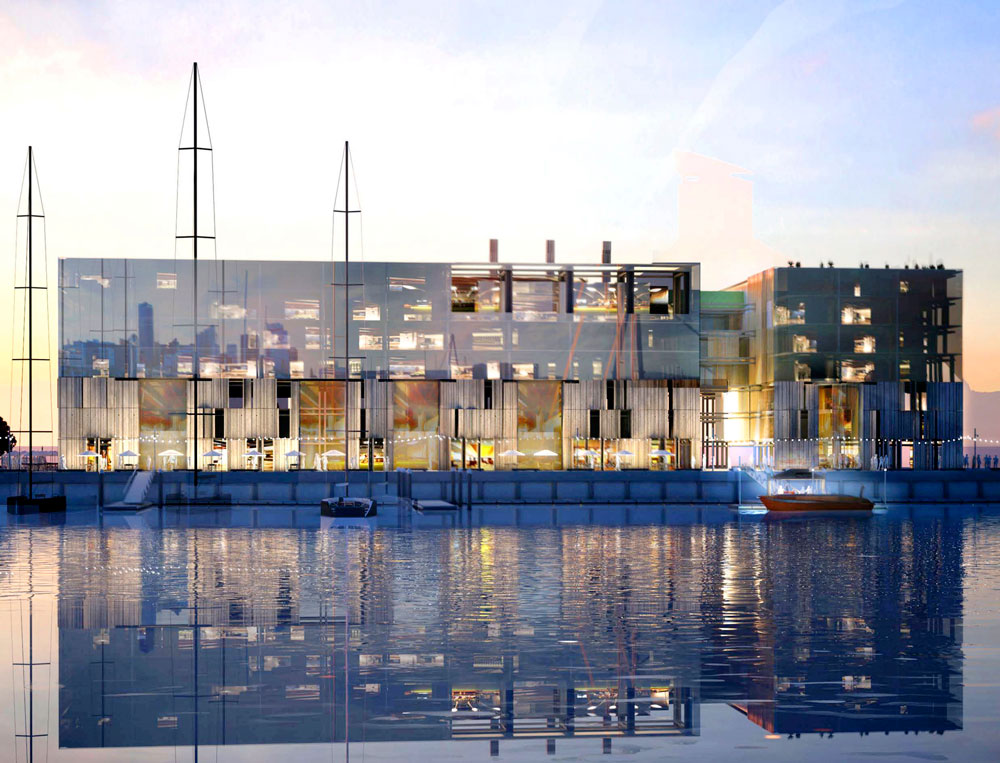
With the new day, the men from Waterfront Auckland were shown the big money behind the hands they were shaking. The influential chairman of the CK alumni association is Chiu Yung. Mr Go had brought him to Auckland in 2012. Yung, whom Harvey describes as “elegant, Old-World Chinese”, is the president of Fu Wah International, headquartered in Beijing. He gave them a tour of some of the company’s projects in the city.
Fu Wah was founded by Chan Laiwa, scion of a noble Manchu family. She was born in the Summer Palace in Beijing, but also into poverty during the Second World War. Hard times compelled her to leave high school and start a furniture-repair business. She was and remains obsessed with red sandalwood, a passion that she claims goes back to the scent of the Summer Palace.
Chan moved to Hong Kong in the 1980s, making a highly successful business out of buying and reselling furniture. Her interests enlarged into real estate. Prospering, she shifted back to Beijing and began building Fu Wah. Today, it is a huge company and Chan is one of the world’s few female billionaires — and the owner-curator of a red-sandalwood museum. “She is one of the richest and most influential ladies in China,” says Hong. He admits to knowing her, but is reluctant to talk about her. “She’s good,” is all he’ll say when asked what she’s like.
She should be good. Chan’s fortune reportedly doubled last year simply through Fu Wah’s ownership of one of Beijing’s most prestigious streets, Jinbao St. The street’s name supposedly means “golden treasure”. It flows with opulence and luxury brands, from cars to clothes to jewellery. Jinbao St is the jugular vein of capitalism pulsing — for an elite — right in the neck of communist China.
Dalzell describes another Fu Wah project they were shown as “Downton Abbey, Beijing-style”. It is a complex of 21 apartments, each a minimum of 3000 square metres, going for at least $NZ60 million apiece. “These are numbers you can’t understand,” Dalzell says when you think you’ve misheard the figures. Exclusive is what Fu Wah does, and the most exclusive property in its portfolio is the Chang An Club. Waterfront Auckland’s second meeting with the CK circle took place there.
The private club is located discreetly in one of the old buildings on Chang An Avenue, China’s most important address. The broad avenue is familiar as the place where a lone protester stood against the tanks making their way to crush the democracy demonstrations in Tiananmen Square in 1989. Its 10 lanes are flanked by mainly government buildings, and no advertising of any kind is allowed.
In the confused state that is the modern and only nominally “Red” China, the capitalist’s haven of the Chang An Club resides among the workings of Communist Party power. Membership fees are said to approach $NZ30,000, although money alone is no guarantee of becoming a member. The club’s entrance pointedly displays a replica of the old imperial throne. Dalzell, Harvey and Hong walked past it into the domain of China’s new aristocracy.
The club’s interior showcases the timeless Chinese motif of gold. There is a golden boat in the foyer. The walls are painted gold. The men from Waterfront Auckland were ushered into a presentation room hung with silk screens on which ibex were exquisitely rendered in gold leaf.
At the apex of a large U-shaped table, Harvey and Dalzell took their places next to Yung, president of the club as well as of Fu Wah. Around them were another 30 CK alumni, mostly a different crowd from Shanghai. Again they had flown in from across China. They represented a new set of huge companies and vast fortunes. “You realise,” says Harvey, “they ain’t playing Monopoly. They’re seriously good players.”
Hong and Mr Go assumed their emcee duties. Again the meeting sprawled over hours, moving from introductions into deeper conversation before emerging, finally, into the PowerPoint-light of the waterfront presentation.
Hong is emphatic about the result: “A huge success.” Dalzell is more circumspect. “Shanghai was pretty unanimous. It was a more diverse crowd in Beijing. We got quite a lot of different reactions, from really interested, to really interested in certain aspects, to just curious.”
Harvey was certain there was a deal in the making. He felt it came down to drawing John Key in personally. The strategy of the trip had been to connect Waterfront Auckland with the Prime Minister in Chinese eyes. Now they had to prove that connection, demonstrate their relationship with Key. All it needed, he felt, was an introduction.
The opportunity came a night later, on the evening of their last day in China, at a black-tie dinner held by the Chinese government to farewell Key. Hong had used his contacts and, with the help of New Zealand Trade & Enterprise, managed to work invitations for Mr Go and one or two other of the more promising CK alumni. As the formal evening progressed, Harvey realised it was not going to be so easy to introduce them to the PM.
Key was seated on a raised table at the front of the room, next to the Chinese Premier. Harvey claims that protocol stipulated that it couldn’t be approached. Tricky. The main course was soon being served. Harvey chose that moment to make his move. It was their last day. There would be no other chances.
He spoke to Pita Sharples, a member of Key’s delegation. “Get me up there,” he said, nodding at the official table. Sharples took up the challenge. He, Harvey and Dalzell eased their way through the busy banquet room, with Sharples leading a casual flanking move on the top table and then the three of them were swiftly around the back of it.
Above them, Key was in conversation with the Chinese Premier. Harvey managed to catch his eye, gestured that he needed him. Key nodded and soon excused himself. Harvey told him quickly that there was the potential for a major deal on the waterfront, asked him to come and meet the investors. No sooner said than done. Key is all about doing business.
“We briefed him as we wove our way through the tables,” says Harvey. “Who they were and what we needed him to do, which was simply to meet them and shake hands.” Along the way they picked up Steven Joyce (Harvey would introduce him as “the Minister of State”), Carl Worker and others too. They were a mini-governmental and cross-party delegation by the time they reached the table with Mr Go and his companions.
Harvey says Key was soon “fizzing” about the possible deal and “charming” toward the CK alumni. Key told them, among other things, that “Auckland needs a Chinese waterfront hotel”. Mr Go and his companions were “clearly delighted”, Harvey claims. Hong says they “felt much honour”.
Dalzell is, as usual, more precise and pragmatic. “For us to be seen to be able to make those introductions,” he says, “all of that is important in building their confidence: this is a place where they can be comfortable investing their money.”
Harvey says that negotiations started the next day.
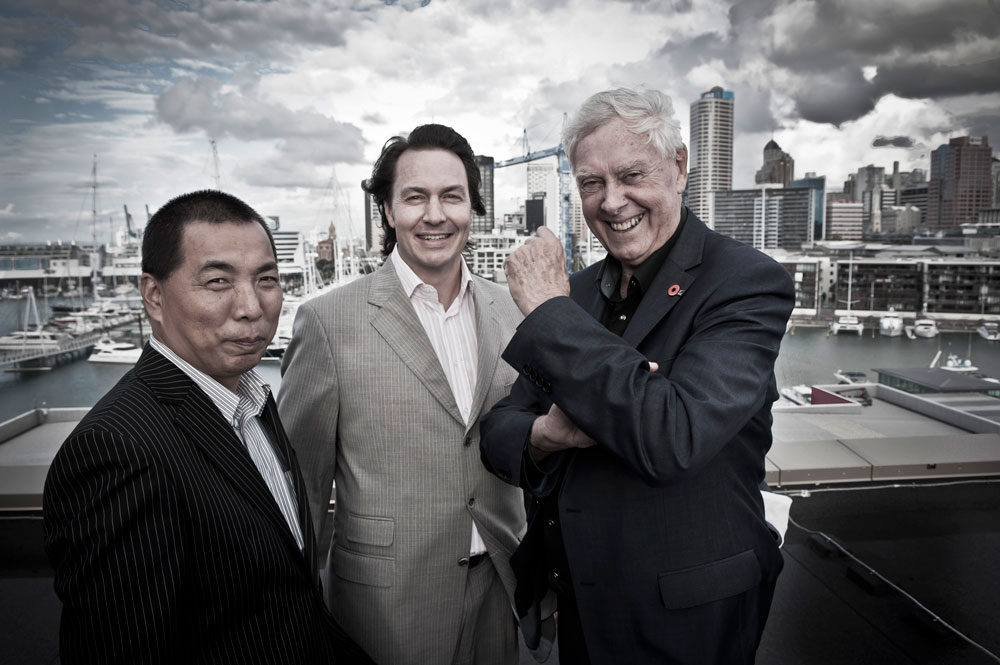
Waterfront Auckland claims its search for investment yielded a thousand expressions of interest from around the world. Hong says the process of whittling them down was about finding those most “willing to co-operate with us, use local expertise and resource, and make a partnership with New Zealand”. This was the point of his hosting CK alumni here in 2012, he claims, so that they became “confident that they can cooperate with the top firms in planning and construction”. It seems it paid off. Key’s handshake with Mr Go — effectively a handshake with 6000 CK alumni — delivered two of the strongest contenders.
One of them, described by Dalzell as “very keen”, wanted to build the entire Central Precinct: the billion-dollar deal. Waterfront Auckland turned it down, considering it inadvisable to put the whole development in one pair of hands. After all their effort in China, the agency went with local bidders for the residential and commercial development. “We got some very compelling bids from the local guys,” Dalzell explains.
But the luxury hotel, the flagship of the regeneration, has gone to the other bidder from the Billionaires’ Club: Chiu Yung of Fu Wah. The company has negotiated a 125-year ground lease on the hotel site. It might seem excessive when you consider Britain negotiated just a 99-year lease on Hong Kong, and they had all the gunboats. On the other hand, Fu Wah won’t see a return on its investment for 30 years. The scale of the company allows it to sink big money into the development without needing to recover it quickly.
“We had local bidders for the hotel,” Dalzell admits, “but we had very few people willing to commit the amount of capital and the quality as our Chinese friends.” Fu Wah will spend at least $200 million on the development, and insiders consider substantially more will be spent. Or rather, the CK alumni will. They have taken the major shareholding.
Hong claims Yung has joked to him that, although he won the bid for the hotel, he lost out on a shareholding in it “because all the alumni get the shares”. The thrust of the anecdote is that Yung has an interest in more investments here, and so do the rest of the alumni. This is the greater significance of the Fu Wah deal, Hong claims.
The agency’s efforts have made New Zealand an investment destination for the most powerful circle of Chinese investors. Which is impressive, since New Zealand is in the shadow of Australia in both profile and the incentives offered to foreign investors. Hong frequently had to tell the Chinese that this country had no incentives and that “in Auckland we treat everyone equally and fairly”. An odd thing, perhaps, to have to explain in a communist state.
Yung is also the most influential person within the CK alumni, and Fu Wah a flagship Chinese company. Where they go, others will follow. Waterfront Auckland has already received more interest.
The question is, why has Fu Wah invested in the hotel?
Dalzell says Fu Wah has simply developed to the stage where it is expanding into the Asia-Pacific region and diversifying its portfolio. This year, the company also purchased the Melbourne Park Hyatt for more than $NZ150 million. It has been rumoured that Fu Wah will bring the same luxury hotel brand to Auckland, although it’s notable this has not been confirmed.
Hong claims that China’s economy has reached a point where Beijing is officially encouraging global investment. Both points are fair, but there is a further dimension. Capital flight from China is massive and growing. It is estimated that half a trillion US dollars has been stashed overseas in tax havens or invested — principally in real estate or infrastructure. This amount is predicted to double in three years. Such investment evades Beijing’s tight policy controls to rein in China’s wild property market.
A study by the Bank of China has also found that half of China’s millionaires have either emigrated or taken steps to do so. Harvey’s chairman’s report on the agency’s 2013 mission acknowledges this was an “underlying agenda”.
“Our investors asked, if property was available, would it be possible for citizenship for them and their families to follow.”
Communist China has become a rich man’s paradise, but the rich men it has made are looking to leave.
China is trapped in a rising debt crisis and foreign investments make sound sense. In smog-shrouded Beijing, citizens watch the sun rise on giant LCD screens in public parks. A lifestyle surrounded by green trees, clean water and clear skies is appealing.
Perhaps all of this combined makes the story of the Three Musketeers and the Billionaires’ Club explicable. The story is true anyway. The money is real — or it had better be, for Waterfront Auckland’s sake.
First published in Metro, May 2014. Photos: Simon Young

